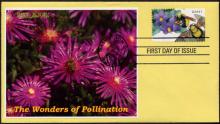Bundesminister Berlakovich zu der schriftlichen Anfrage betreffend Bienensterben - Landesrat Rudi Anschober fordert ein österreichweites Verbot von Maisbeizmitteln zum Schutz der Bienen
Anfragebeantwortung durch den Bundesminister für Land- und Forstwirtschaft, Umwelt und Wasserwirtschaft Dipl.-Ing. Nikolaus Berlakovich zu der schriftlichen Anfrage (7588/J) der Abgeordneten Ing. Kurt Gartlehner, Kolleginnen und Kollegen an den Bundesminister für Land- und Forstwirtschaft, Umwelt und Wasserwirtschaft betreffend Bienensterben, siehe Anhang. "Umwelt- und Landwirtschaftsminister Berlakovich muss endlich ein österreichweites Verbot von Maisbeizmitteln zum Schutz der Bienen durchsetzen. Die Saatgut-Beizmittel haben in den letzten Jahren nachweislich Bienenvölker getötet, jetzt geht es nicht mehr um weitere Analysen. Leider ist für die aktuelle Bienensaison wieder mit Bienenverlusten zu rechnen. Es braucht endlich Taten statt Worte", so Umwelt-Landesrat Rudi Anschober.




